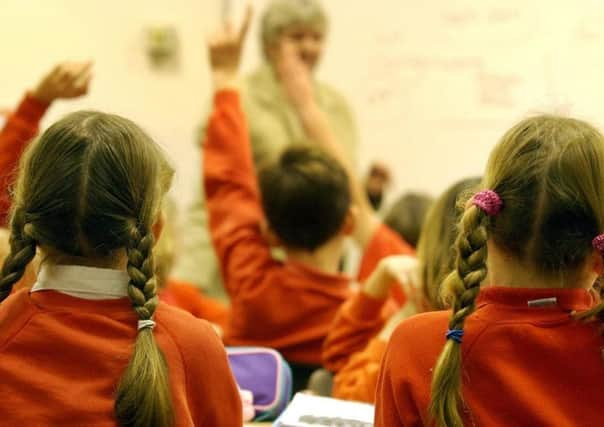Schools face '˜cliff edge' over increase in deficits


As revealed earlier this month by The Yorkshire Post, one in 10 maintained schools in England, and one in seven in Yorkshire, are reporting deficits totalling a significant sum. Now, as in-depth analysis by the Education Policy Institute lays bare findings over acute challenges particularly at secondary level, questions have been raised over what could be done to ease the pressure.
Around four-fifths of school deficits could be eliminated, the EPI argues, if local authorities were able to redistribute reserves from some “excessive balances” into those with deficits.
Advertisement
Hide AdAdvertisement
Hide Ad“These statistics highlight again the financial pressure that schools in England are under, particularly at secondary level,” said Jon Andrews, report author and deputy head of research at EPI. “But they also show that a large number of schools are maintaining significant surpluses. The challenge for Government, local authorities, and school leaders, is whether that money should now be redistributed.”
Today’s report from the EPI, looking at school balances in England, found that almost a third of local authority maintained secondary schools are in deficit, a figure which has risen four-fold since 2014.
It comes just days after The Yorkshire Post revealed that in this region, one in seven schools is struggling, with deficits doubling to more than £30m in the past two years alone.
According to the EPI report, while the proportion of local authority schools in deficit has risen, there are still a large number of schools with significant surpluses. One in three secondaries, and 40 per cent of primaries, have balances deemed as “excessive” by Department of Education, it has found.
Advertisement
Hide AdAdvertisement
Hide AdThe EPI, making a number of recommendations, says the Government must consider before the Spending Review whether higher per-pupil funding is needed or if efficiency savings can cover shortfalls. It also suggests that further consideration should be given to what extra help or advice can be offered to schools facing large deficits.
Geoff Barton, general secretary of the Association of School and College Leaders, said the startling figures over deficits provided evidence that many schools have hit the “financial cliff edge” the union has long warned is looming.
Noting the findings over ‘‘excess surpluses’’, he added: “It is important to understand that it is prudent financial management to carry forward a surplus when possible in order to provide a contingency to cover unforeseen expenditure, and the fact that so many schools cannot now do so is cause for grave concern.
“What is clear is that the current trend is one of increasing deficits and unless action is taken to improve the level of funding, it is highly likely that educational standards will deteriorate.”
Advertisement
Hide AdAdvertisement
Hide AdA Department for Education spokeswoman said the report itself showed that 94 per cent of academy trusts, and 90 per cent maintained schools, were reporting a surplus or breaking even, with 45 per cent increasing their surplus: “Whilst the core schools and high needs budget is rising from almost £41bn in 2017-18 to £43.5bn by 2019-20, we do recognise the budgeting challenges schools face. That is why the Education Secretary has set out his determination to work with the sector to help schools reduce the £10 billion they spend on non-staffing costs and ensure every pound is spent as effectively as possible to give children a great education.”